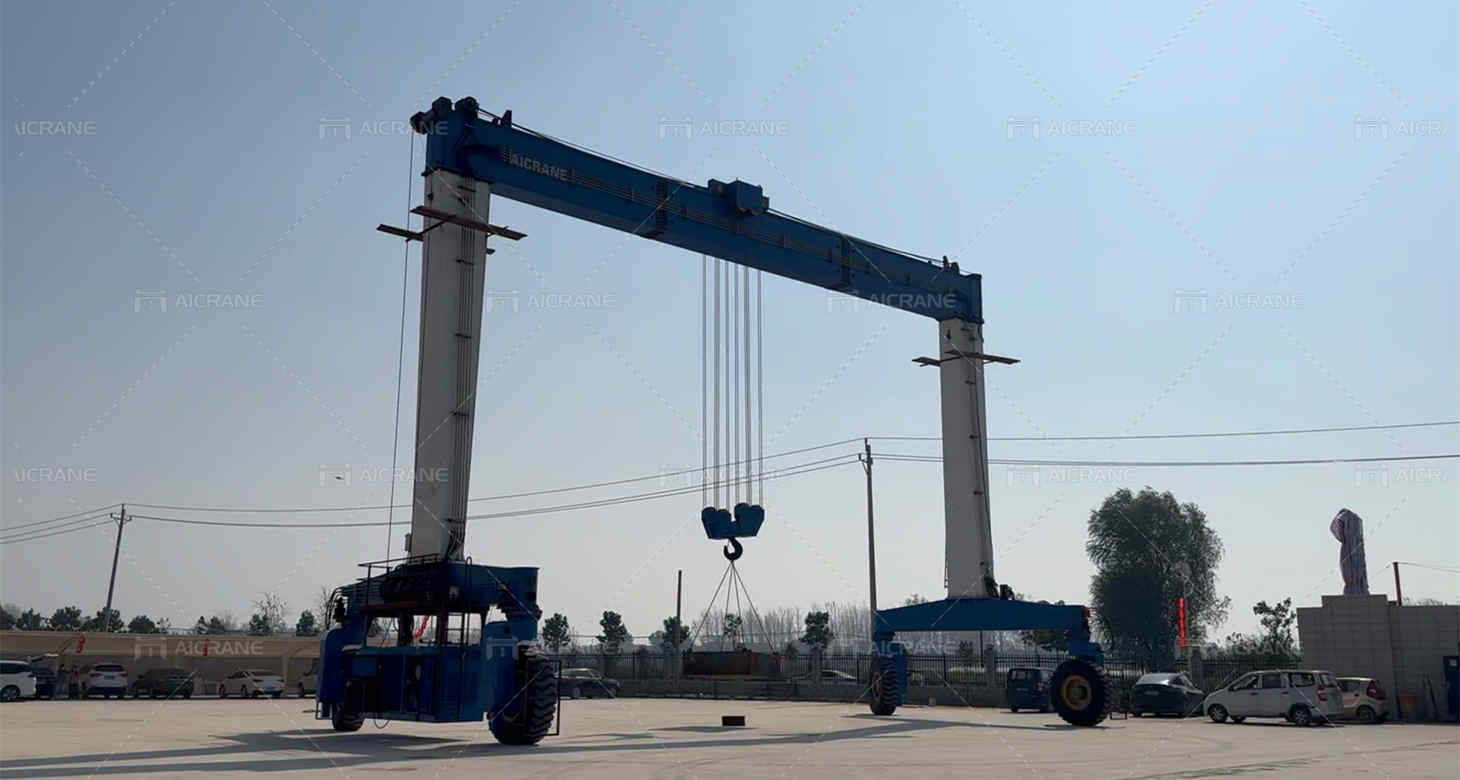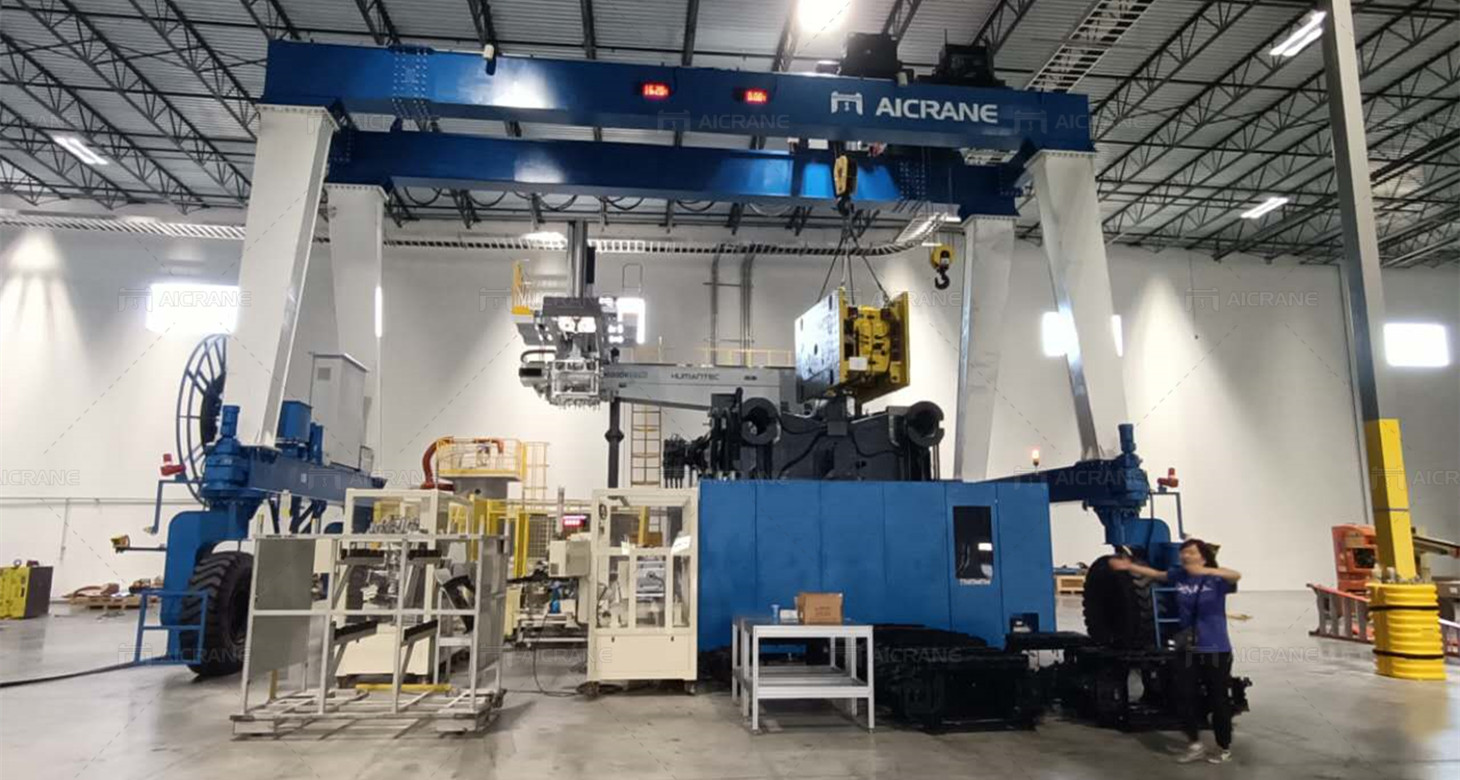Electrical rubber-tyred gantry cranes represent a significant advancement in the field of material handling and logistics, particularly in container terminals and intermodal yards. These cranes are known for their mobility, versatility, and efficiency. Compared to their diesel-powered counterparts, electrical rubber-tyred gantry cranes offer numerous advantages that make them a preferred choice for modern port operations. This passage will delve into the key benefits of electrical rubber-tyred gantry cranes, highlighting their environmental impact, operational efficiency, cost savings, and technological integration.

Environmental Impact
One of the most significant advantages of electrical rubber-tyred gantry cranes is their reduced environmental impact. Traditional diesel-powered gantry cranes emit substantial amounts of greenhouse gases, contributing to air pollution and global warming. In contrast, electrical rubber-tyred gantry cranes operate on electricity, which can be sourced from renewable energy, thus significantly reducing carbon emissions. This shift towards electric power helps ports and terminals meet stringent environmental regulations and supports global sustainability goals.
Additionally, electrical rubber-tyred gantry cranes produce less noise pollution compared to diesel engines. This reduction in noise is particularly beneficial in urban port areas where noise can be a major concern for nearby communities. The quieter operation of electrical rubber-tyred gantry cranes enhances the working environment for crane operators and other port workers, leading to improved occupational health and safety.
Operational Efficiency
Electrical rubber-tyred gantry cranes are designed to enhance operational efficiency in several ways. Firstly, electric motors provide smoother and more precise control over crane movements. This precision translates into faster and more accurate container handling, reducing the time needed for loading and unloading operations. The improved control also minimizes the risk of container damage during handling, ensuring the integrity of goods.
Moreover, electrical rubber-tyred gantry cranes can be equipped with advanced automation and remote control systems. These technological enhancements allow for semi-automated or fully automated crane operations, reducing the reliance on manual labor and enhancing productivity. Automation also leads to more consistent performance, with fewer errors and less downtime.
Cost Savings
Although the initial investment for electrical rubber-tyred gantry cranes can be higher than for diesel-powered cranes, the long-term cost savings are substantial. Electric cranes have lower operating costs because electricity is generally cheaper than diesel fuel. Moreover, electric motors require less maintenance than diesel engines, leading to reduced maintenance expenses and less downtime for repairs.
The extended lifespan of electric motors compared to diesel engines further contributes to cost savings. Electric motors experience less wear and tear, which means fewer replacements and longer intervals between major overhauls. Over the crane’s operational life, these savings can offset the higher upfront costs, making electrical gantry cranes a cost-effective choice for port operators.

Technological Integration
Electrical rubber-tyred gantry cranes are often integrated with advanced technologies that enhance their performance and operational capabilities. For example, many electrical rubber-tyred gantry cranes are equipped with energy recovery systems that capture and reuse the energy generated during crane operations. This feature not only reduces energy consumption but also lowers operational costs.
In addition to energy recovery systems, electrical rubber-tyred gantry cranes can be integrated with smart grid technology. This integration allows for better energy management, optimizing electricity usage based on demand and supply conditions. Smart grid integration can also facilitate the use of renewable energy sources, further reducing the environmental impact of crane operations.
Electrical rubber-tyred gantry cranes can also be connected to terminal operating systems (TOS), providing real-time data on crane performance and container handling operations. This data can be used for monitoring, analysis, and optimization of port operations, leading to improved efficiency and reduced operational costs. The ability to track and analyze performance metrics helps port operators make informed decisions and implement best practices.
Safety and Reliability
Safety is a paramount concern in port operations, and electrical rubber-tyred gantry cranes offer several safety advantages over diesel-powered cranes. Electric cranes have fewer moving parts and no fuel combustion process, reducing the risk of mechanical failures and fire hazards. The precision control offered by electric motors also enhances the safety of lifting and moving operations, reducing the likelihood of accidents.
Electrical rubber-tyred gantry cranes are designed with advanced safety features, such as automated emergency stop systems, overload protection, and collision avoidance systems. These features enhance the safety of both the crane operators and the ground personnel, ensuring a safer working environment.
Flexibility and Mobility
One of the defining features of rubber-tyred gantry cranes is their mobility. Electrical rubber-tyred mobile gantry cranes can move across the terminal on rubber tires, allowing them to be easily relocated to different areas as needed. This flexibility is particularly valuable in dynamic port environments where operational needs can change frequently.
Electrical rubber-tyred gantry cranes can operate in confined spaces and navigate tight corners, making them suitable for a variety of terminal layouts. Their mobility also allows for efficient space utilization, as they can be moved to optimize container stacking and retrieval processes.
Energy Efficiency and Sustainability
Electrical rubber-tyred gantry cranes contribute to energy efficiency and sustainability in port operations. By operating on electricity, electrical rubber-tyred gantry cranes can utilize renewable energy sources such as wind, solar, or hydroelectric power. This transition to clean energy sources helps ports reduce their carbon footprint and move towards more sustainable operations.
The energy efficiency of electric motors is another advantage. Electric motors convert a higher percentage of energy into useful work compared to diesel engines, which means less energy is wasted as heat. This efficiency translates into lower energy consumption and reduced operating costs.
In conclusion, electrical rubber-tyred gantry cranes offer numerous advantages over traditional diesel-powered cranes, making them an excellent choice for modern port operations. Their environmental benefits, operational efficiency, cost savings, and integration with advanced technologies position them as a sustainable and effective solution for container handling. As ports and terminals continue to seek ways to improve their operations and reduce their environmental impact, the adoption of electrical rubber-tyred gantry cranes is likely to increase, contributing to a more sustainable and efficient global logistics network. Purchase your rubber-tyred gantry crane from a reliable gantry crane manufacturer.